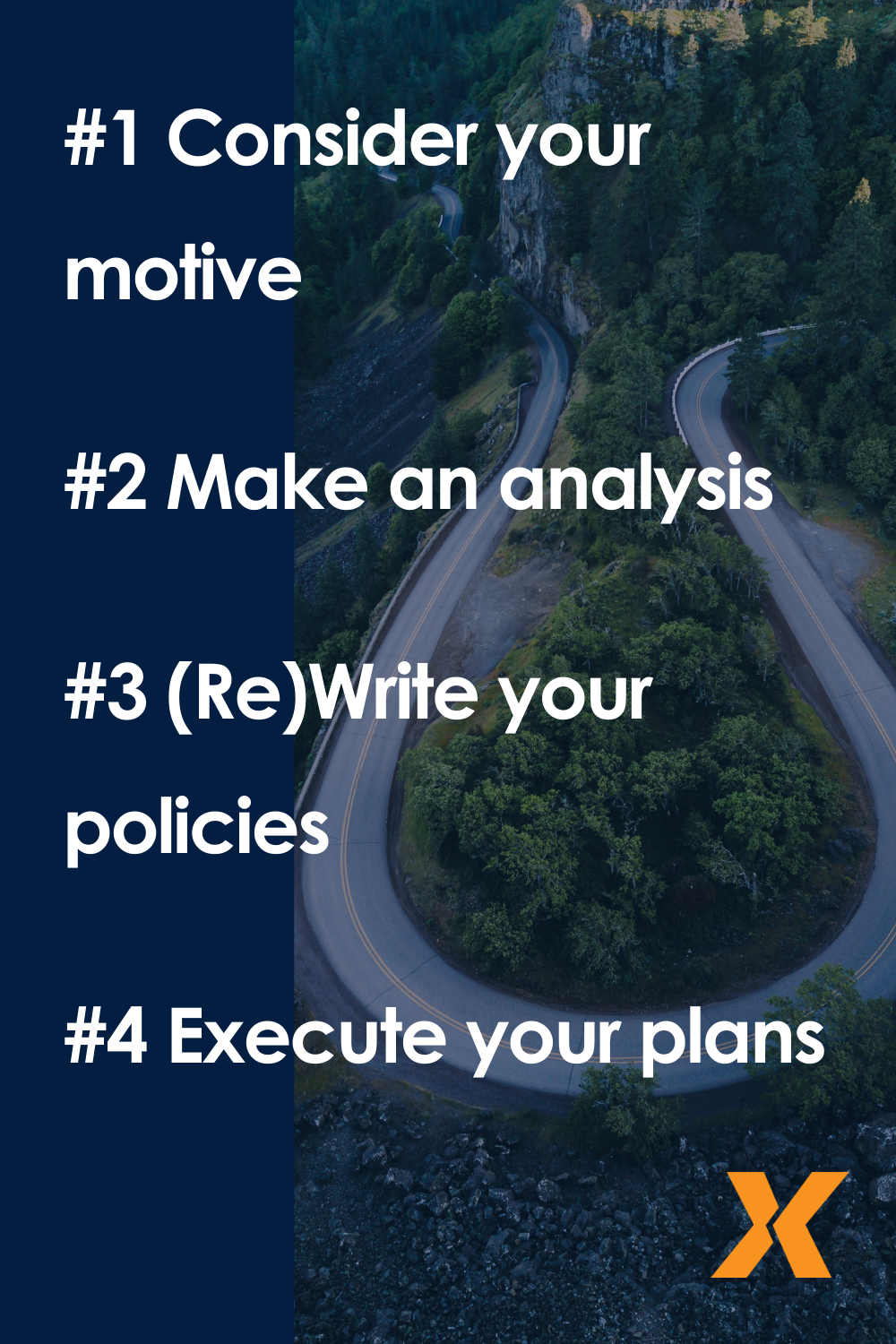It is impossible to keep up with the changes in the fleet world. The new Belgian government wants emission-free fleets by 2026. Brussels announces the introduction of a toll for anyone wishing to drive into the city. And CO2 emissions will no longer be shown as NEDC but as WLTP. In addition, many car makes will introduce new models. You wouldn’t be able to see the wood for the trees from less.
Is your company planning to make the change? Then take these four steps into account.
#1 Consider your motive
Why does your company want to switch from a car policy to a mobility policy? Maybe your company consciously chooses to become greener and is fully committed to sustainability. But economic reasons can also be at the basis of a switch. The changes in taxation and CO2 are causing strong inflation of your total fleet costs. Or perhaps the question comes more from your employees.
#2 Make an analysis
Whatever your motives, do not copy what other companies are doing because there is no one solution for everyone. Don’t go along with the hype. So make a good analysis.
What is practically feasible? Also draw up a mobility profile for each employee. Launch an internal survey and check the interests of your employees. Our customers have access to our Driver Profiler, a tool that outlines a profile for each driver and helps them make the best choice in terms of type of company car. Finally, take a look at the financial picture. What does your TCO look like today? If you work with a full TCO calculation and you add plug-in hybrid and electric vehicles to your fleet, your CO2 emissions are reduced, your tax deductibility is increased and so you create room in your budget to add alternatives.
#3 (Re)write your policies
After the analysis, your company is ready to bundle and document the new guidelines. Our advice to our customers is: bundle everything in one document. In this way you avoid references to other documents that are no longer up to date after some time.
#4 Execute your plans
Now all that remains is to put the theory into practice. Who are you going to work with? Which partners will you choose for your transition? Be thorough in your search for the right partners. TraXall Belgium assists customers with RFPs and helps them to make the right choices.
In order to enter into all these processes with different partners, you need the best tools. Moreover, wouldn’t it be easy if your partners’ systems and tools were connected to each other? That way, your processes run efficiently and automatically.
When executing your plans, communication is very important. Be transparent to your stakeholders, partners and employees. For example, organise information sessions where your employees can ask questions.
After all, always keep an overview to keep your costs under control. Good reporting helps you to adjust your policy and processes when necessary.
TraXall Belgium as your fleet management partner
As an independent party, TraXall Belgium helps large companies with more than 100 cars with a total mobility needs package. Tailor-made advice, setting up and developing thinking exercises and putting these into practice by taking over the processes. Processes that can be quite complex. Our team simplifies these processes by setting up our own automation tools and being in contact with the employees.
Interested? Then book an introductory meeting with Bart Van Elsacker, Consulting & Project Manager at TraXall Belgium.

